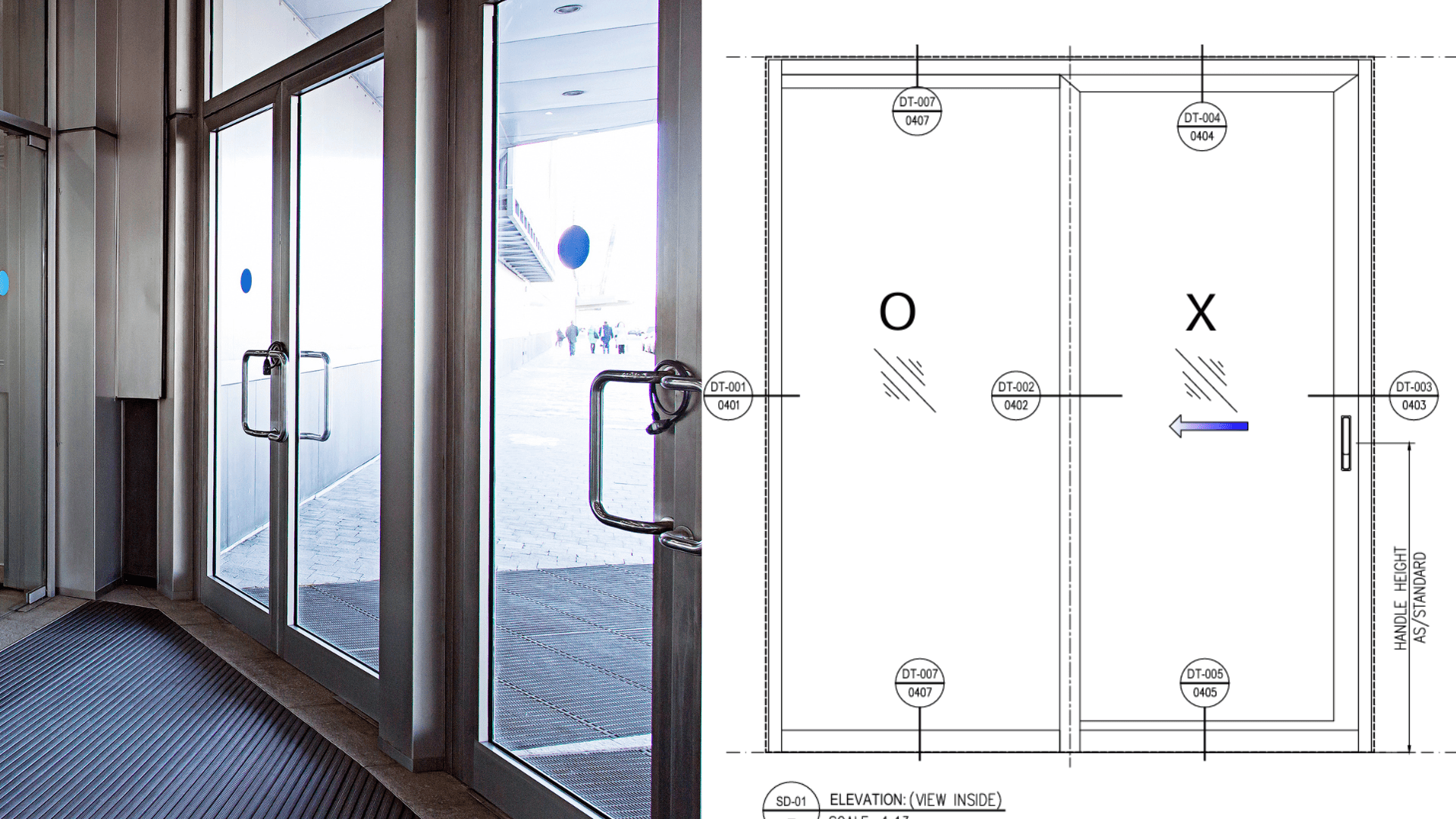Glass Door | Shop Drawings | Elements
Shop drawings for glass doors are highly detailed documents that serve as a vital link between design intent and on-site execution. These drawings help fabricators, installers, architects, and project managers ensure that every component of the glass door system is accurately planned and assembled.
Elements of Glass Shopping Drawings
Glass Door Type and Configuration
The first step that comes in a glass shop drawing is the type and configuration of the door. Whether the door is a swing door, sliding door, pivot door, or bi-fold door It is all provided in the glass shop drawing. For example, in a commercial office space, framed sliding glass doors are used at the entrance. It’s clearly mentioned in the glass shop drawing whether it’s a single or double door system and which side the door opens from, left or right.
Accurate Dimensions and Size Details
Precise measurements are crucial in glass shop drawings. The drawings specify the overall opening size as well as the exact width, height, and thickness of the glass panel itself. Clear specifications ensure a proper fit, maintain clearances around the door, and ensure compliance with safety standards.
Glass Specifications and Type
Different spaces require different types of glasses. For example, a bathroom might use frosted laminated glass for privacy, while a storefront may require clear toughened glass. The drawing provides instruction on which type of glass to use, like clear tempered glass, frosted glass, laminated glass, or tinted glass.
It also includes details on whether the edge finishing is polished, beveled, or raw.
Framing System and Structural Support
Not all glass doors are frameless. Many come with aluminum or steel frames for additional support. In this case, the shop drawings provide a clear view of the framing system, including the top rail, side channels, and thresholds. These components are carefully dimensioned and labelled. For example, in a high-rise lobby, a framed glass door with stainless steel support is often detailed with all its anchoring points, brackets, and joint connections.
Hardware and Fittings
Glass doors often require a variety of hardware fittings according to its requirements so they can function smoothly. It includes hinges, handles, locks, patch fittings, floor springs, and closers. The glass shop drawing provides a list of hardware items to be used with their exact location, size, and make. For example, a frameless swing door may use a dormakaba patch fitting and floor spring, which are specified along with product codes and finishes such as brushed steel or matte black.
Finishes and Materials Schedule
Shop drawings provide the finish types for materials used in glass doors. It includes information about glass tint, frame coating, and hardware finishes. For example, the door frame may be powder-coated in matte grey, and the handles may be in a brushed nickel finish. This section ensures that the visual appearance matches the design intent.
Elevation and Sectional Views
Visual representation is an important part of shop drawings. Elevation views show the door from the front to illustrate how it looks when installed, whereas sectional views slice through parts of the door to show the internal structure and fixings.
Clearance and Accessibility Details
Shop drawings often include minimum clearance requirements to ensure safety and accessibility. It follows building codes such as the Americans with Disabilities Act (ADA) or local standards. For example, there might be a 10 mm gap at the bottom for airflow or to avoid scraping against the floor.
Installation Instructions and Fixing Methods
Specific notes in shop drawings provide instruction on how to install the door and its components. It includes the anchoring details, fixing bolts, sealants, and brackets. For instance, a drawing might mention that the door frame should be fixed using M12 anchor bolts with chemical grout or that a certain silicone sealant should be used for weatherproofing.
General Notes and Compliance Information
General notes in a drawing are a section that contains information such as site measurements, handling guidelines, or tolerance allowances. Notes list relevant building codes (like ASTM or IS standards) that the glass door system complies with. For example, the note may say, “All glass to conform to ASTM C1048 standards for heat-treated flat glass.”
Title Block and Drawing Information
At the bottom of the glass shop drawings, you will find the title block. It contains project details such as the project name, client, drawing number, date scale, and revision date. Such information helps in tracking the changes in the team, referring to the correct version, and maintaining organized documentation.
Conclusion
In summary, glass door shop drawings are comprehensive documents that bring clarity to both design and construction. They cover every detail from door types and glass specifications to installation methods and hardware fittings. By including all these elements, shop drawings ensure the glass door system is safe, aesthetically pleasing, and properly integrated into the building structure.



